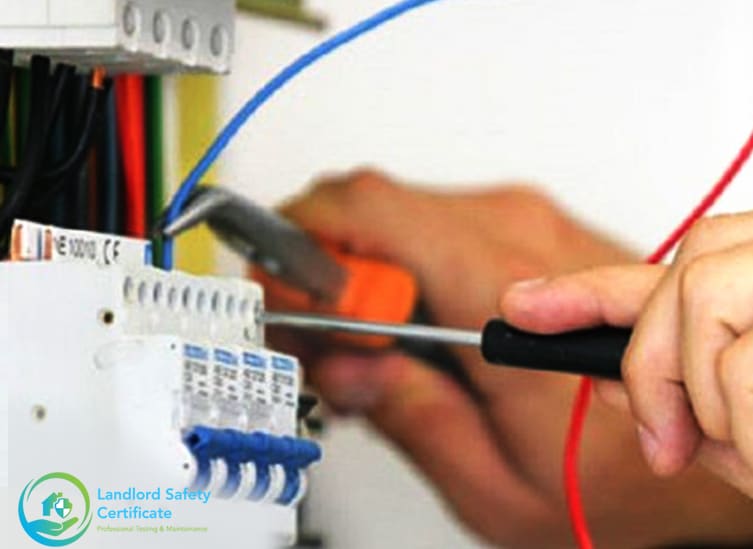
New electrical safety standards for tenancies in the private rented sector have come into force on 1st June 2020.
These regulations apply in England to all new tenancies from 1 July 2020 and all existing tenancies from 1 April 2021. This means that tenancies signed on or after 1 June 2020, which start on or after 1 July 2020 should have an Electrical Installation Condition Report, (EICR). Typically, an Electrical Installation Condition Report (EICR) is used to conduct an electrical installation safety report.
NB: For Contractual Periodic Tenancies (where it is written in the original tenancy agreement that on expiry of the fixed term the tenancy will become periodic) the periodic tenancy will be part of the same tenancy and no new tenancy would be created.
NB: For Statutory Periodic Tenancies (where on expiry of the fixed term the tenancy rolls over into a periodic tenancy automatically by statute, rather than by contract) the periodic tenancy would be a new tenancy. Therefore, properties let on statutory periodic tenancies where the Fixed Term expires between 1 July 2020 and 1 April 2021 will require an inspection and test at this point under the Regulations.
The regulations require that private landlords must ensure:
• Electrical safety standards are met when the property is occupied during a tenancy.
• Every fixed electrical installation at the property is inspected and tested at least every five years by a qualified person.
• The first inspection and testing is carried out before new tenancies commence on or after 1 July 2020 and by 1 April 2021 for existing tenancies.
NB: Where the most recent report requires an inspection and testing to be at intervals of less than five years, it must be at intervals specified in that report.
If an existing certificate was done longer than five years ago, regardless of whether it is valid for 10 years, it will not be applicable for these Regulations. Consequently, to comply with the Electrical Safety Standards the existing EICR must be less than five years old (dated back five years from when the tenancy agreement was signed).
Electrical safety standards: the inspection and test of the installation is carried out in accordance with the eighteenth edition of the wiring regulations BS 7671:2018 (the national standard to which all domestic wiring must conform).
Electrical installation: fixed electrical cables or fixed electrical equipment located on the consumer’s side of the electricity supply meter as set out in the Building Regulations 2010.
Qualified person: someone who is competent to undertake the inspection and testing as well as any further investigative or remedial work in accordance with the electrical safety standards.
Therefore, following the inspection and testing a landlord must:
1. Obtain a report that includes the results of the inspection and test and the date of the next inspection and test.
2. Supply a copy of that report to each existing tenant at the property with 28 calendar days of the inspection and test.
3. Supply a copy of the most recent report to any new tenant before the tenant moves in and to any prospective tenant within 28 days of receiving a request in writing for the report.
4. Retain a copy of the report until the next inspection and test is due as well as supply a copy to the person carrying out the next inspection and test.
NB: When requested the report must be provided to the local authority within seven calendar days.
NB: A prospective tenant is someone who wants to view the property, makes an offer (either verbally or in writing) or requests any information about the property for the purpose of deciding to rent.
Where a report requires the landlord to undertake further investigative or remedial work, the landlord must ensure that the work is carried out by a qualified person within 28 calendar days or the period specified in the report if less than 28 days, starting with the date of the inspection and testing.
1. Obtain: landlords must obtain written confirmation from a qualified person that further work has been carried out and that the electrical safety standards have been met.
2. Supply: written confirmation together with a copy of the report which required the further investigative or remedial work to each existing tenant and the local housing authority within 28 days of completion of the work.
NB: This process must be repeated every time further investigative and remedial work is carried out.
For further information on the above and any aspect of letting your property, please call either Kate Morton, Head of Lettings or Marishelle Butler, Head of Property Management on 02392 632275.
Specific information regarding the above and details on Remedial Notice and Financial Penalties can be found on
www.arla.co.uk
www.legislation.gov.uk/uksi/2020/312/introduction/made
www.gov.uk/government/publications/electrical-safety-standardsin-the-private-rented-sector-guidance-for-landlordstenants-and-local-authorities/guide-for-landlords-electricalsafety-standards-in-the-privaterented-sector